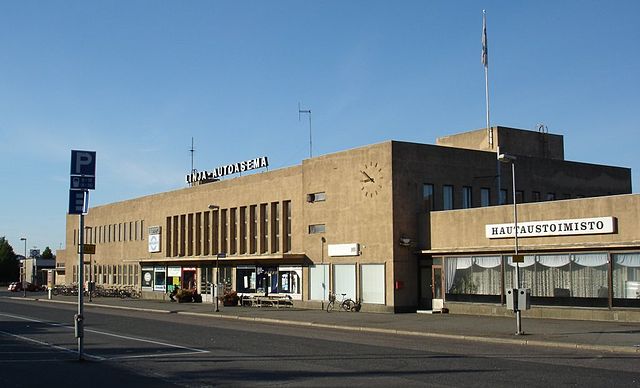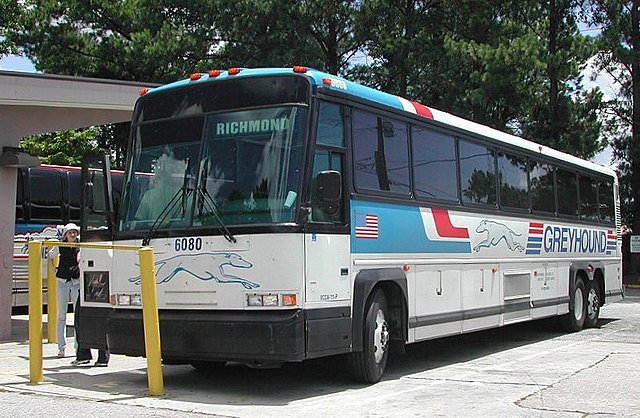A bus station or a bus interchange is a structure where city buses or intercity buses stop to pick up and drop off passengers. While the term bus depot can also be used to refer to a bus station, it can also refer to a bus garage. A bus station is larger than a bus stop, which is usually simply a place on the roadside, where buses can stop. It may be intended as a terminal station for a number of routes, or as a transfer station where the routes continue.
UBC Exchange at the University of British Columbia in Canada
Tampere Bus Station in Ratina, Tampere, Finland
Woodlands Bus Interchange in Singapore
An intercity bus service or intercity coach service, also called a long-distance, express, over-the-road, commercial, long-haul, or highway bus or coach service, is a public transport service using coaches to carry passengers significant distances between different cities, towns, or other populated areas. Unlike a transit bus service, which has frequent stops throughout a city or town, an intercity bus service generally has a single stop at one location in or near a city, and travels long distances without stopping at all. Intercity bus services may be operated by government agencies or private industry, for profit and not for profit. Intercity coach travel can serve areas or countries with no train services, or may be set up to compete with trains by providing a more flexible or cheaper alternative.
An integral bodywork MCI 102DL3, an intercity bus owned by Greyhound Lines, typical of those used in the 1990s and early 2000s.
Two Oxford Tube body on chassis vehicles at the Buckingham Palace Road terminus
Behind time, anonymous engraving of a stagecoach in England.
The Hyde Park Gate in London, erected by the Kensington Turnpike Trust. These trusts helped to stimulate a sustained period of road improvement in the 18th century.







